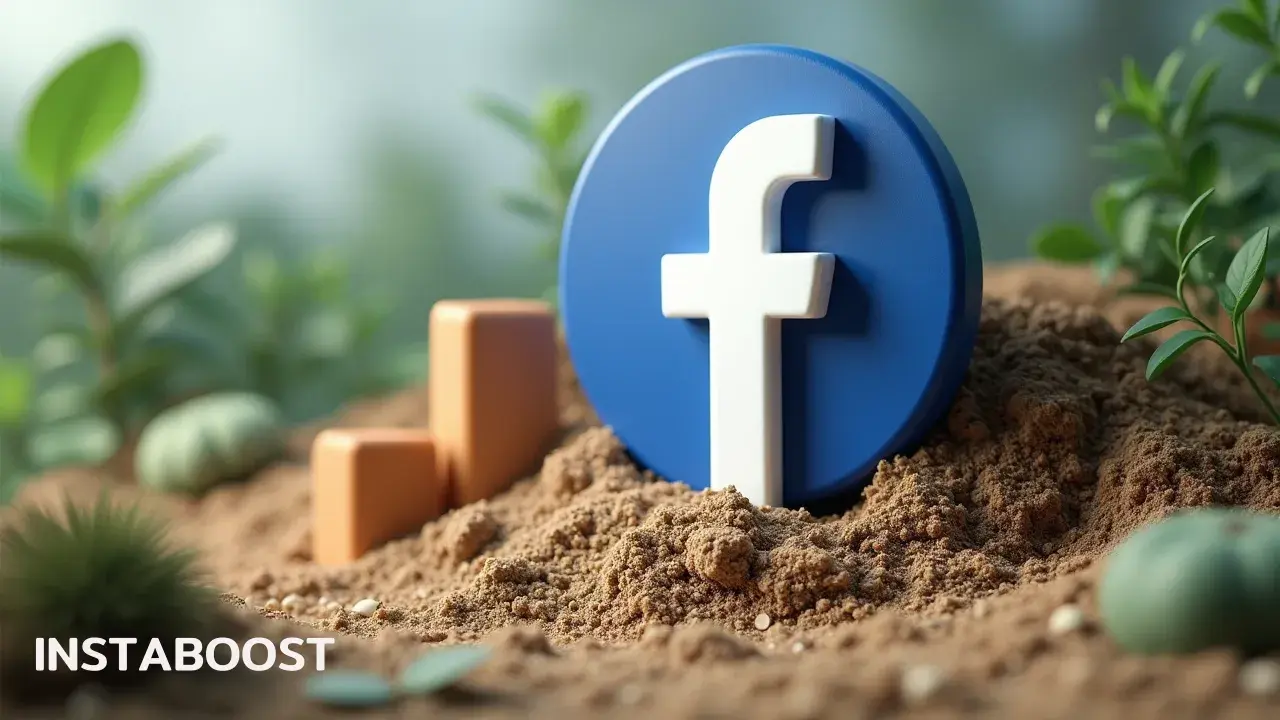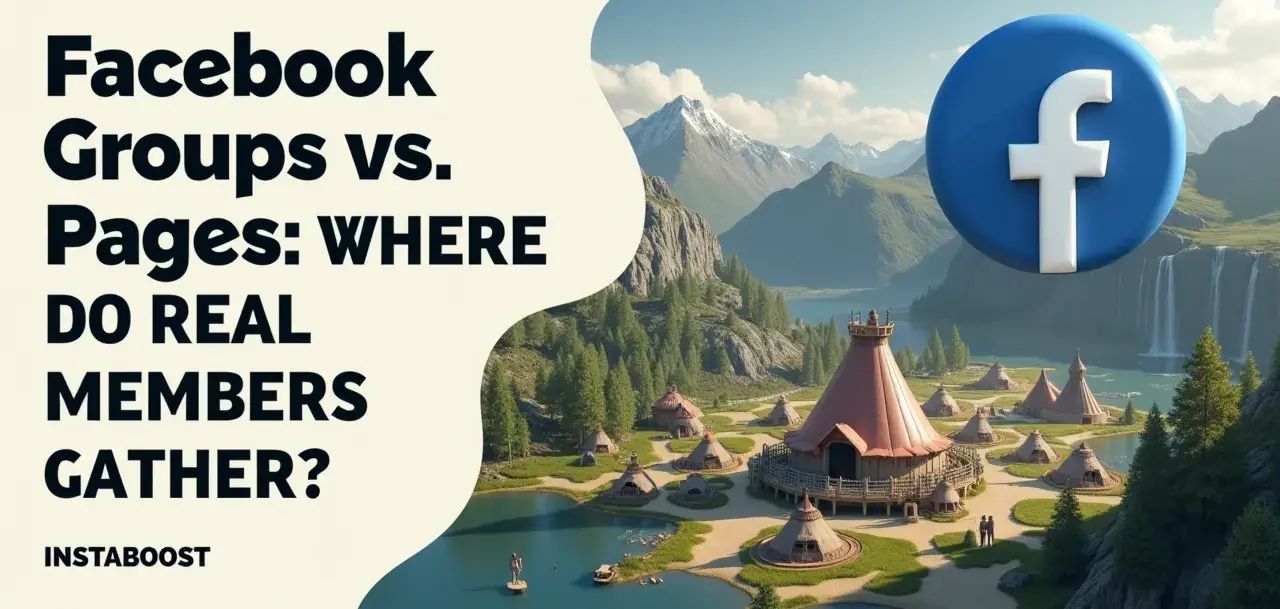Facebook Groups vs Pages: Where Do Real Members Gather?
Real member engagement tends to concentrate in Facebook Groups, where discussion permissions and notifications invite ongoing participation. Pages are useful for broad updates and branding, but their reach often depends on algorithms and tends to be more one‑to‑many. When goals include building authentic community, group features like member posts, moderation tools, and topical focus support deeper interaction. The smart path is to pair a Page for visibility with a Group for sustained, measurable engagement.
Where Digital Communities Actually Connect
If you spend some time looking at Facebook, it becomes pretty obvious that different spaces work differently – especially when you notice the difference between people who actively take part and those who just scroll past. Deciding whether to set up a Facebook Group or stick with a Page seems small at first, but it actually matters a lot if you care about people really getting involved instead of just watching from the sidelines. Both Groups and Pages bring people together, but they do it in their own ways.
Groups tend to be about people talking to each other, sharing advice, asking questions, and having conversations that actually go somewhere. There’s a sense that members are part of something, and you see people replying to each other, not just the person who started the post. Pages, though, are more like bulletin boards you put up in a common area – good for announcements, updates, or big news, but not really built for back-and-forth discussion.
Sometimes, when people are thinking through how to approach all this, they’ll stumble across resources like Facebook marketing made easy, which break down these choices and help clarify what each option really does best. If you’re hoping to create a space where people feel comfortable joining in, or you want to try things like Facebook Live and actually see people respond, understanding these differences matters. A lot of brands and creators figure this out by trying both approaches, often realizing that the real value is in the places where people talk to each other, not where a post gets the most likes.
So if you’re thinking about how to connect with people in a real way, whether you’re starting a business or hoping to build something that feels a little more personal, it helps to think about where those real conversations might actually happen.
So if you’re thinking about how to connect with people in a real way, whether you’re starting a business or hoping to build something that feels a little more personal, it helps to think about where those real conversations might actually happen.

Signals of Real Community: Beyond the Metrics
I didn’t pick this up from any guide or manual – it’s something I noticed after spending a lot of quiet time in Facebook Groups, watching how people interact. After a while, it becomes clear that analytics don’t tell the whole story. In groups, members actually return to check on things, respond, and follow up – while on Facebook Pages, even with thousands of followers or polished posts, most people just hit “like” and disappear. Groups run differently. You see people tagging each other, asking questions, sharing links or tips, and sometimes someone will answer before the admin even sees the post.
What matters isn’t the follower count or post reach; it’s the feeling in the comments. Does it feel comfortable, the way you might feel at a regular meeting spot, or is it more disconnected, like passing by strangers in a busy place? Pages are still good for getting news out or sharing updates, and sometimes people put effort into enhance Facebook page authority, but if you care about real conversations – if you want people to notice when someone’s missing or to keep threads going – Groups seem to do that better. That’s probably why more brands, from solo creators to companies like INSTABOOST, are moving toward Groups. So when you’re weighing Groups against Pages, it helps to look past the numbers and see where people are actually talking to each other. That’s usually where the real connections are happening, even if there’s not much data to show for it.
Cutting Through the Noise: Strategies That Actually Move People
Most people don’t really need another set of tips – they need help getting things to actually happen. On Facebook, whether you’re thinking about Groups or Pages, it’s not about finding some clever shortcut. It’s more about noticing how things really pick up. When you start a Group, you’re bringing people into a space where they can actually get involved – ask questions, answer each other, sometimes even push back a bit. That’s what shifts the dynamic. When someone posts, replies, or even quietly follows along in a Group, it turns it into a place where things are happening together, not just a one-sided broadcast.
Pages, on the other hand, usually end up being a spot where updates go out and maybe people see them, maybe they don’t. It’s kind of like pinning flyers on a wall. Sometimes people hope that a little extra boost – like when they buy likes for instant credibility – will make a difference, but if you’re hoping for people to actually care, to remember you, it usually doesn’t come from posting more, or chasing attention.
It’s more useful to start with small things – asking questions that invite people in, letting the members guide where it goes a bit. Real momentum tends to come from the back-and-forth, not from perfectly polished announcements. Even for a company like INSTABOOST, it’s the ordinary conversations and the posts from members inside a Group that seem to matter most – more than the sharpest posts on a Page. So if you’re thinking about your own Facebook community, maybe spend less time planning and more time paying attention to where people are actually talking, because that’s usually where they start to care.
The Accountability Gap: What’s Missing From Pages
Most of the time, when people talk about Facebook Groups versus Pages, they focus on reach or engagement numbers, but something that doesn’t get much attention is accountability. On a Page, people can scroll through, maybe hit like, comment if they feel like it, but nobody expects them to stick around or follow up. Pages are really made for broadcasting – you put things out there and hope for a reaction, but there’s no pressure on anyone to participate beyond that.
In Groups, though, everything gets a bit closer. People tend to notice when you show up, and also when you don’t. If someone asks a question or shares what they’re working on, it’s almost assumed that others will come back, offer some advice, or at least acknowledge what’s been said. It’s not a rule, but there’s this natural sense that you should respond.
That’s different from the way Pages work, where it’s easy for everyone to stay on the sidelines. Actually, even if you’re trying to get more views for Facebook content, it’s pretty clear that the atmosphere in Groups leads to deeper participation. I think that’s why people who care about the topic or the group end up being more active, even if the group is smaller. You won’t get the same numbers as a Page, but the conversations tend to matter more. For someone trying to figure out where to put their time or energy, that sense of responsibility in Groups really stands out. It’s not something the algorithm can measure, but it changes the way people interact.
Beyond the Numbers: Where Community Actually Happens
This isn’t meant to be a complete guide. The real distinction between Facebook Groups and Pages has less to do with which is “better” and more to do with where people actually want to spend their time. In a Group, things can start out with people who barely know each other – but as they talk, swap questions, or share experiences, you see a kind of low-key familiarity build up.
It’s not about big moments; it’s the small stuff, like running jokes or noticing when someone’s missing for a while. Pages, on the other hand, might pull in a lot of followers, but without reasons for people to check in or join a conversation, it can feel pretty one-sided, like you’re sending updates into silence. There are things you can do – like boosting engagement or even experimenting with Facebook share promotion – but ultimately, spaces with the strongest sense of community, whether that’s a Group, a Page, or something else entirely, tend to be the ones where people know their input matters and where they’re expected to take part, not just scroll through quickly.
That’s how someone goes from being an occasional visitor to actually caring about what’s going on. So if you’re thinking about how to build a real audience, or planning your next Facebook Live, it helps to look beyond the number of likes or members and focus on what gives people a reason to stick around. At INSTABOOST, we run into this all the time – it’s less about which platform you pick and more about how you make people feel connected to what you’re doing.
Choosing the Right Home for Your People
It mostly depends on what kind of space you’re hoping to create. Pages are good if you need to reach lots of people – they’re public, anyone can see your updates, and they’re set up for things like announcements or live streams. Still, sometimes with Pages, it can feel pretty one-sided.
You might get reactions or comments here and there, especially if you try to prompt responses, but the conversation doesn’t usually go very deep. Groups tend to have a different feel. Since they’re often private and focused on something specific, the people who join are usually there because they actually care. There’s more room for back-and-forth – people start threads, ask questions, help each other out. Not every Group turns into a close-knit place, but the setup does make it easier for people to take part in a way that feels normal.
So you sort of have to weigh whether you care more about reaching a lot of people, or making a place where folks stick around and talk. For brands like INSTABOOST, where it helps to have people who want to keep showing up, Groups seem to make more sense – not just for the big posts, but for the smaller stuff that happens every day. Still, sometimes you don’t really know until you try one and see how it goes.















